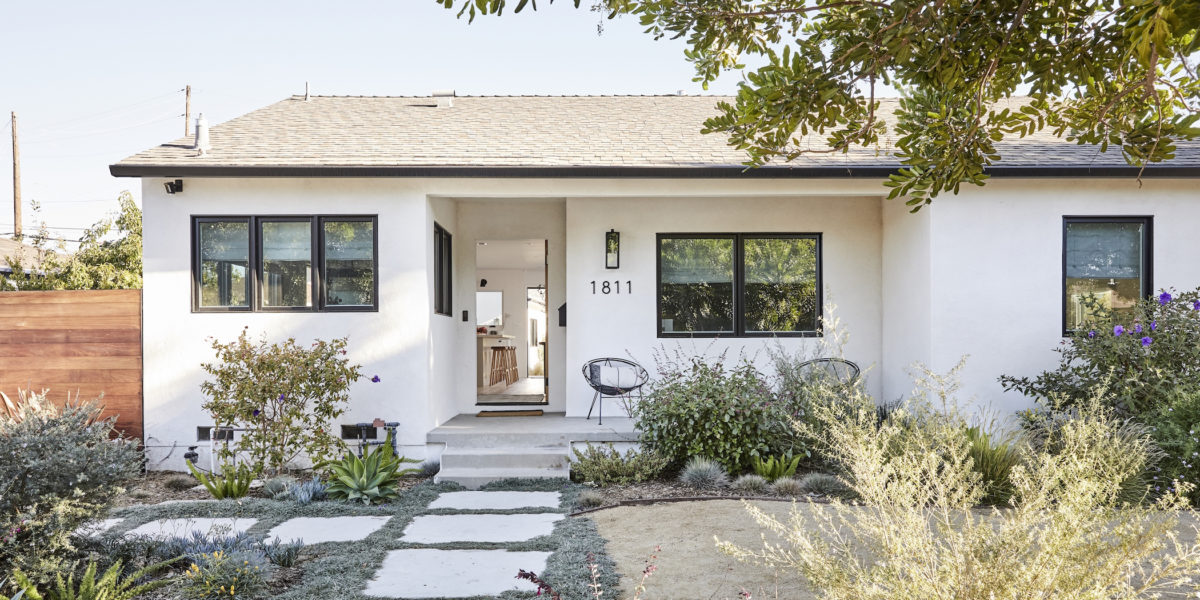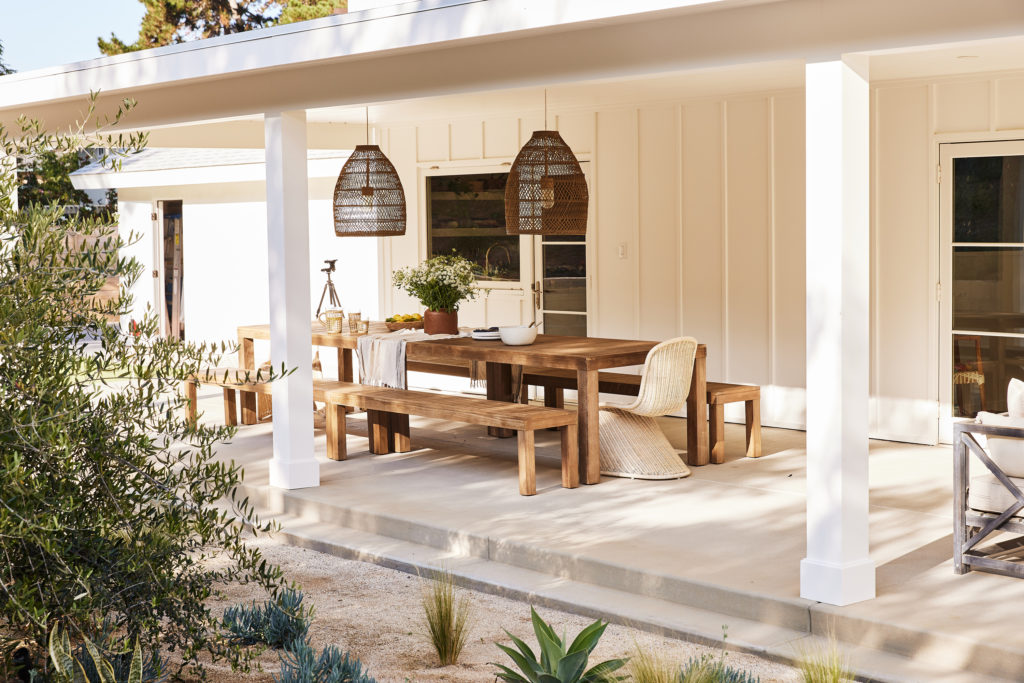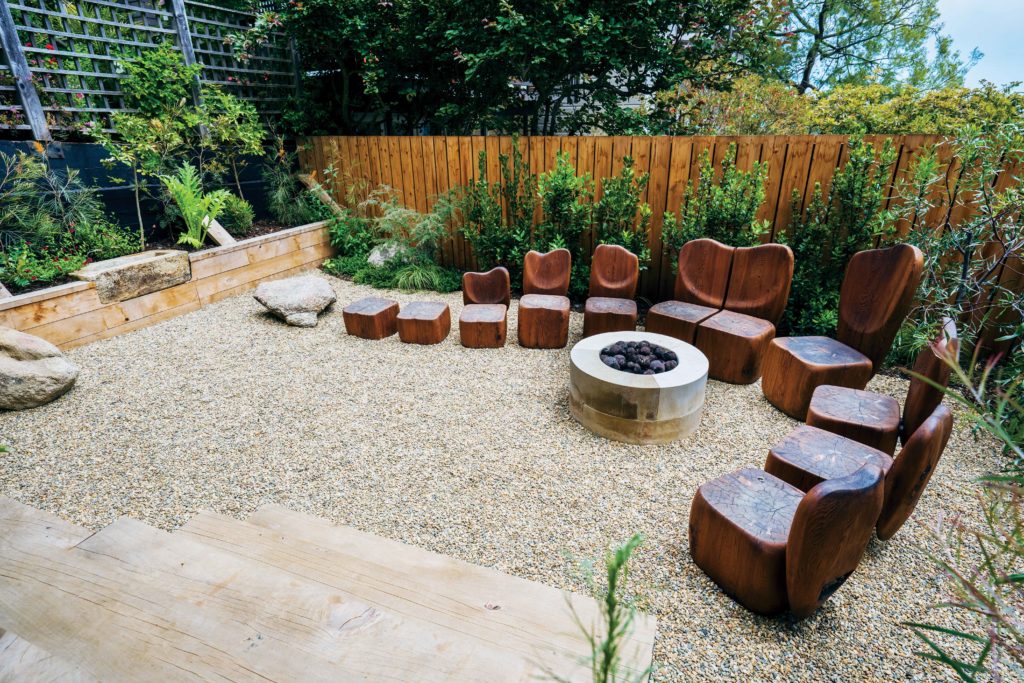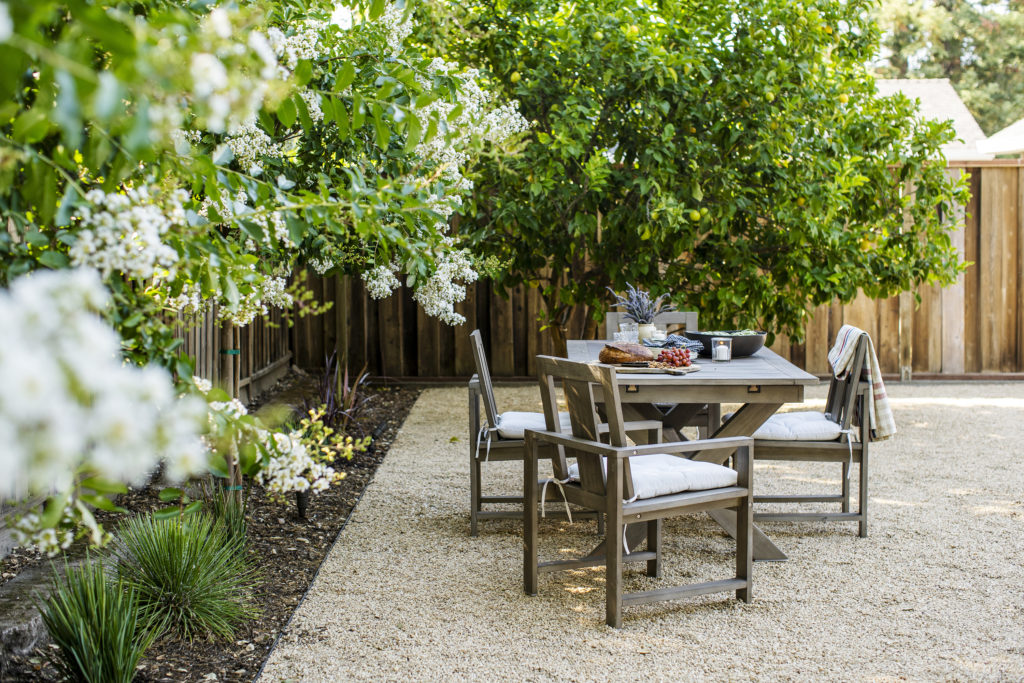
Consider These Affordable Alternatives If the Drought Is Killing Your Lawn
Let’s face it, the drought means it’s high time to replace your lawn. Here’s everything you need to know about two popular—and affordable—options.

Courtesy of Yardzen
I turned off my sprinklers last summer, which means my lawn now looks as dry and dead as a haystack. What I want to know is, now what? After all, in Los Angeles, the drought is so bad that residents can only water once a week. Where I live, in Glendale, I can water twice. With the searing heat, the lawn is fried and I don’t want a lawn anyway. It takes too much water, fertilizer, care—and I can’t take the guilt! I never particularly loved it. It just came with the house, people!
So, I’m considering replacing said lawn with either decomposed granite—or “DG,” as it’s commonly known—or gravel. These two drought-friendly design solutions are not only cost-effective but also super functional.
The question is, which? I turned to Kevin Lenhart, the design director at Yardzen, an online landscape company, for help. He says he’s used to having clients ask him how to either reduce the size of or outright replace their lawn, and with the drought “it happens more and more.”

Courtesy of Yardzen
With both, says Lenhart, it’s important to think about design, and not just dump DG or gravel in your former lawn’s place. “You want to look at the entire footprint that the existing lawn takes up, and think, ‘What can I do with this area that will yield the overall most benefit for the entire design?’” Lenhart says. “So, for example, use a chunk of that existing lawn area to expand planting beds, and use another chunk to create a sitting area.” Another area can be what he calls a “blurred lines zone” whose principal intention would be for people to move through it. “It’s open space that’s used as a path,” he says.
One great thing about gravel or DG? “In neighborhoods where lawn is the norm, it can help sell your neighbors on having an alternative to a front lawn because they both look pretty and intentional,” says Lenhart. “That said, you want the DG or gravel not to look like a choice you made because you had a void to fill but because you had a single cohesive design.”
Here, Lenhart tells us everything we need to know about how to replace a lawn with DG or gravel, and the pros and cons of each.
So, how does one go about replacing a lawn with DG?
The first thing you need to do is remove the lawn. You can do that the old-fashioned way by digging it out, which is more labor intensive but is the most surefire way to get rid of it. (Some lawn species are notoriously hard to get rid of—like Bermuda grass.) The other way, which requires more time, is sheet mulching. You basically smother the existing grass with a layer of cardboard or paper and pile on layers of organic material like mulch. It doesn’t require a lot of labor. It builds your soil health which means not only is grass gone for good, but you end up with healthier soil to put your new plants into. It takes several months, depending on the temperature. The warmer the soil, the faster your chemical reactions will take place. So, if you do it in warmer months it will take less time. It’s good to budget several months for it.
What’s the next step?
You put down a weed barrier like landscape fabric to cover the soil and suppress weeds, and you install edging around the space that the DG will fill, because it needs something to hold it in place. Once you have that, you mix a stabilizer into the DG, put it in place, and compact it. There will be a little bit of loose DG on the top, but it’s a firm, stable walking surface. Once your DG is installed, you’re good to go.

Courtesy of Yardzen
What are the pros and cons of DG?
Let’s talk about the cons first. It will stick to your shoes, and that’s not the end of the world, but what you don’t want to do is run a DG path directly to the front door of your house because it will track in and scratch your floors. To prevent this, you can provide a decent-sized landing outside the door that’s a different material like pavers, concrete, or whatever you prefer.
Another con: Because DG is compacted, water infiltrates much more slowly and it runs off like concrete, which can lead to it getting puddles or getting muddy. So, it’s not a great material in rainy climates. And despite the compaction, moss and weeds can still grow up in DG, especially if it’s in the shade and has moisture trapped in it. So, you’re going to want to rake the surface for weeds. It’s not a zero-maintenance material; you’ll need to periodically refresh the surface material and recompact it and keep it outside of any drainage flows. It’s a finer material than gravel, and with that comes maintenance connected to puddling and water.
What about pros?
It’s a very stable walking surface, and it’s great for expressing a rustic feel. Fire pits are a classic example of a great function to pair with DG because it’s a “woodsy” experience. The crunch of decomposed granite under your feet complements that vibe. It’s also great for outdoor dining experiences—that’s a really European, romantic vibe. It’s great for functional work zones like placing vegetable beds, and it’s cost effective. It’s going to cost you somewhere in the neighborhood of $12 a foot, so it’s a great alternative to keep in your pocket when you’re figuring out what you want to use to cover the ground.
What about in front of the house?
It looks really good when it’s used to create the appearance of a single gradient where you have planted and unplanted zones. When you try to do that, it pays to select a DG color that looks at home with your regional landscape. In the West or Southwest, tan DG is the way to go. If you’re in the Northwest, “blue” DG—which is really gray DG—looks natural. You can use color choice to create a sense of belonging in the natural landscape.
Is DG with pets a problem?
It can stick in your dog’s paws and your dog could come in and scratch the floors, but dogs are fine running around on it. You can wash it down if dogs go to the bathroom on it, but you need to stay on top of it just like with any material. It’s not the best for a dog bathroom zone; it’s better to use bark mulch for that.
What about kids?
For kids, it’s not the best play surface because you can scrape a knee on it. So I wouldn’t put a play structure on a DG area. But it’s fine to play tag on it.
How do you go about replacing a lawn with gravel?
It’s similar to DG. You remove your lawn. Same process there. You put down edging and weed fabric and then you lay down the gravel and that will be that.

Thomas J. Story
What are the pros and cons for gravel?
So one con that can happen: I live in Houston and it will rain so hard that gravel will float up over the edging and distribute over my yard. If you live in an area that gets heavy rains you need to keep an eye on that. You can install higher edging which will take care of it, but that does create a trip hazard. Another con is gravel is generally not advisable with small children because they like to put it in their mouth or throw it. They grow up past that, of course, but for little ones you don’t want it if you’re going to spend unsupervised time.

Sunset’s Garden Issue 2022
More from this issue:
- Need Help Taking Care of Your Air Plants? We’ve Got Just the Guy
- Stroll Through Lotusland, the Fantastical Botanic Garden of Your Dreams
- What Happens When the West Coast Barbecue King Sets out to Conquer Fried Chicken?
- Add Some Color to Your Brunch with Edible Flowers
And gravel can move around, right?
Right. Another con is that it’s a loose material, so it can get kicked around. Don’t use it on high-use paths or where dogs are running around, because it’s common for gravel to escape its bounds. So, if you are a person who prioritizes having your yard looking pristine you may want to use a larger decorative stone like Mexican pebbles or river rock which would be less likely to get displaced by feet. That said, if you take a broom it’s easy to get gravel back where it’s supposed to be. But I will say I have had multiple clients who say, ‘For god’s sake, don’t get me gravel. I’m out there sweeping it up every single week because of my kids.’
How about dogs?
It permeates, so it’s probably a little bit better than DG in terms of urine smells, but you still want to do the same best practices.
What about pros?
Gravel is super cheap, it’s pretty much the cheapest material you can get for having a finished looking hardscape space. It’s super versatile material in terms of function and aesthetic. You can get any color of the rainbow so it’s easy to match it to the aesthetic of your landscape. So, if you have certain colors happening in your design, you can absolutely find gravel to match those colors.

Courtesy of Yardzen
Meanwhile it has the same rustic feel as decomposed granite and that crunch under foot, but it also has this strong affiliation with English gardens and is as commonly used in formal English gardens as it is in common cottage gardens, so you can use gravel in any design style. For onsite water management it’s huge—gravel is a big deal for sustainability because it slows down water and then lets it soak down into the ground. It does all that but at the same time it is super functional for controlling water on your site, so it does triple duty.
Anything else we should know?
You really don’t want to keep your existing lawn shape and just dump a bunch of gravel or DG in its place. Think about what you’ll be using that area for. You don’t want huge expanses of gravel or huge expanses of DG. There’s a temptation to do that, but it’s not going to be a design that feels vital and warm and alive—especially with gravel which can look cold. You can use a decent amount but don’t go overboard. Let them dissipate out with planting areas. It’s all about balance. I think that a person should be equally focused on not only, ‘How to do I integrate DG or gravel into my lawn replacement?’ but ‘How do I add trees and planting areas? What about privacy and height layering and ground cover so everything looks intentional?’ You want to make sure components are working harmoniously together. DG and gravel are mediums you use to achieve your overall design, it’s not the design itself.
